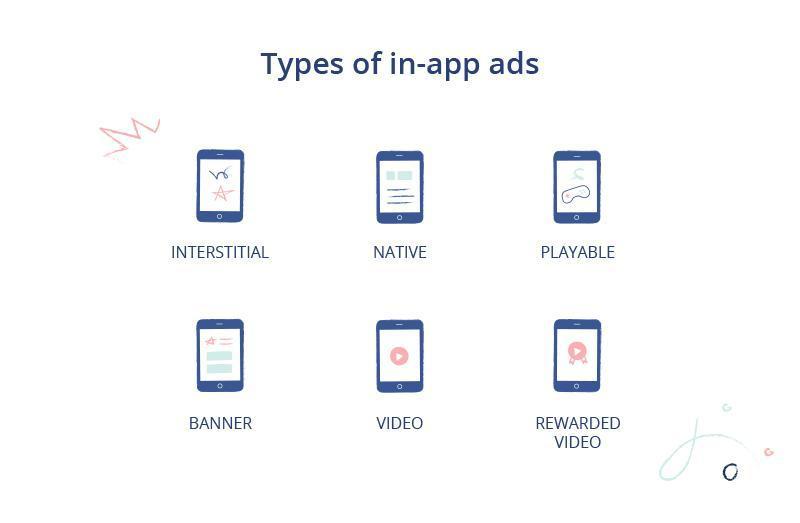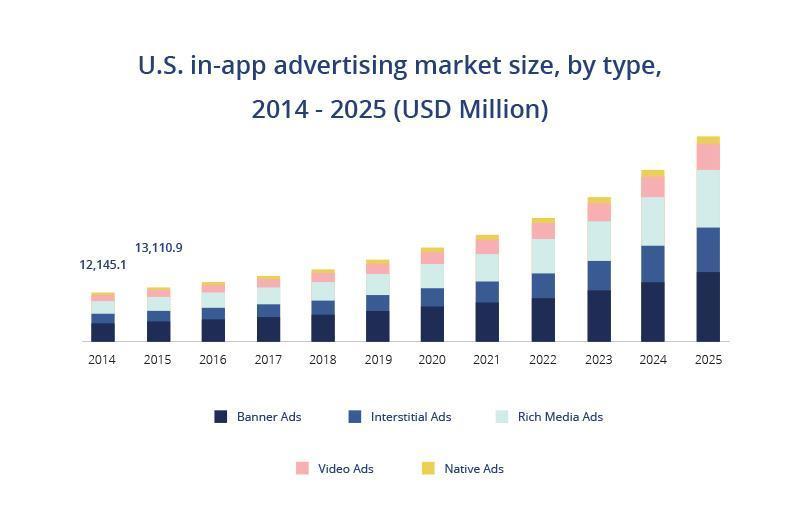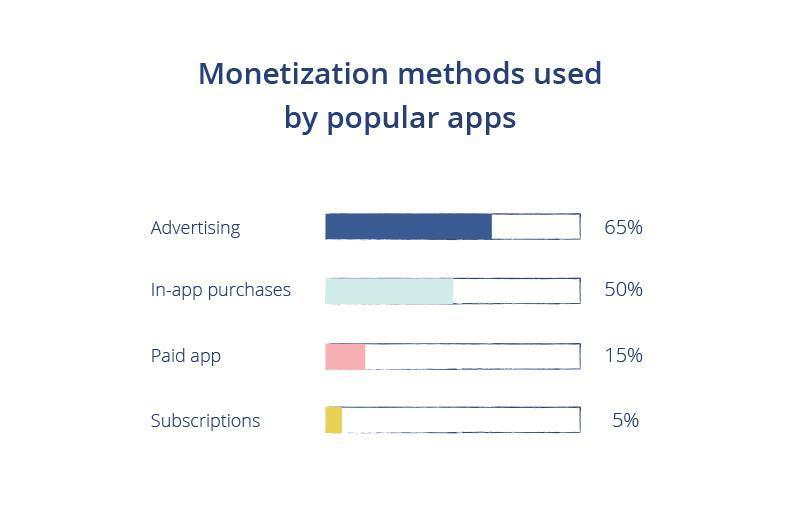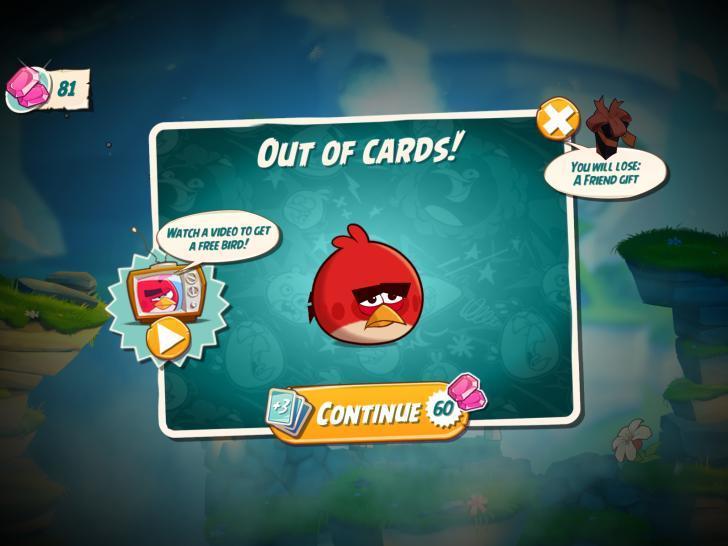According to statistics, last year an average user spent at least 6-7 hours a day with his smartphone. The situation might have a bad effect on our offline life, but there's a silver lining either. For example, think about prospects opening up for monetizing our apps! It remains to find a proper approach to the issue and choose the best pricing model for your mobile application.
And by the way, the task isn't a simple one. A mistake is likely to lead to the financial failure of your project, and you obviously don't want such an outcome, do you? So you should consider the matter of pricing a product for mobile apps in the very first stages of the development process, preferably, in the planning phase.
However, don't worry. We're here to give you some practical tips to help you understand how to deal with the app monetization problem. After reading our article, you'll be able to work out a correct value-based pricing strategy and profitably implement it.
What is the pricing strategy?
It's always better to face real facts, so we'll give some statistics, to begin with.
Alas, Gartner's forecasts aren't comforting: there is a risk that in the coming years only 0.01% of the total number of existing applications will be profitable. According to research, more than 90% of downloads from the App Store and Google Play are free, and if you want to win a paid user, you have to fight really hard. In addition, such a situation increases the cost of advertising and makes it difficult to start a successful mobile app business.
Total revenue is expected to show an annual growth rate of 8.83% (2022-2027), resulting in a projected market volume of US$673.80bn by 2027. However, in order to get your piece of the pie, you need a well-thought-out service pricing strategy that takes into account the market situation, the nature of your target audience, including its financial capabilities, and so on.
So what is it, after all?
Now let's talk in essence, that is, discuss the bottom line of product pricing strategies for mobile apps.
Pricing strategies mean the ability to monetize a project, make it profitable; the application has to be capable of bringing you real money. In the end, many apps are created with earning purposes in mind, right? Therefore, you need to seriously approach this problem, it's the only way to succeed.
There are a lot of popular pricing models for mobile apps, we suggest discussing them in order
Types of mobile app pricing strategies
So, it's time to describe the common pricing strategies, including the peculiarities of their effective use.
Ad monetization model
If you want to provide a free app pricing model, then consider using in-app advertising. Such a system is quite easy to implement, and you’ll get a profit soon after the application launch, you won’t have to wait long to start earning money.
And note, correctly adjusted in-app advertising is able to increase your total revenue by several times.

Hints and tips on using in-app advertising:
-
Follow the main trends in mobile advertising, namely:
-
Native advertising (one that perfectly matches the app design) comes first;
-
UX Friendly Approach is required;
-
Reasonable limitation of ad impressions would be a good thing.
-
-
Test different ad formats, experiment, and analyze the effectiveness of each in-app advertising approach.
-
It's very important to choose the right time and place to display ads. To find the best solution, track user behavior in your application using analytics tools.
-
Often, the problem is irrelevant advertising that isn't related to the application’s nature. Let's say it's foolish to advertise an online casino in a healthcare app.
-
If your application has a very low user reach, then the ad monetization model may be ineffective. In such a case, it’s better to choose the right pricing strategy for your mobile app (which is not, alas, in-app advertising).

BTW!
According to Marketing Land, the share of native advertising will occupy 63% of the total mobile ad market in 2020.
Freemium pricing model
There are different kinds of freemium strategies, but they have one thing in common: creating a free application with paid access to unique features. A vivid example is Skype, which provides users with the possibility of free chatting and voice communication. However, if you want to call a mobile or landline number, you’ll have to pay.

Hints and tips on using a Freemium pricing model:
-
Keep in mind: the user must have good functionality even in the free app version, otherwise, he won't be willing to pay to get more. Alas, freemium models often overly restrict access to cool features, and this situation is very annoying to users. Definitely, it’s one of the key cons of a freemium app.
-
Additional paid features should carry real value to the user. He must be happy with his decision to fork out to access exclusive functionality.
-
When calculating the budget, you have to understand that just a part of your users will buy extra features. Say, only 5% of Skype users pay to make international calls through this program, which is unlikely to be the main source of income. Are you ready for a similar situation?
Subscription
The method is slightly similar to the previous one and involves regular payment (a subscriber fee). If the application is really good and helpful, then this would be the right kind of pricing strategy to use.
Hints and tips on using a subscription model:
-
The real trick is to figure out how much free content the user should be provided with before you ask him to subscribe. Also, think about the cost of the subscription: you need to find something in between “Oh, it's too expensive!” and "Now it’s not profitable"
-
The model is especially great for news and entertainment applications with a high retention rate.
BTW!
Don't repeat the mistakes of the owners of the Scribd reader application. They promised that a monthly subscription of $9 would open unlimited access to all books. However, in small print, it was said that bookworms would be restricted anyway because they read too much. As you might guess, this led to a lot of negative comments.
In-app purchases
In-app purchases belong to the best product pricing strategies for your mobile app. It has many advantages: the model can be easily combined with other methods of monetization; in addition, it doesn’t restrict users in access to features. Still further, you can sell both virtual and real products or services.
Hints and tips on using in-app purchases:
-
If you have a game application, then in-build purchases are a real must-have! You can sell special tips, magic weapons, access to new levels, and so on. And, most importantly, avid players are willing to buy such things!
-
As with the freemium pricing model, in-app purchases should benefit to users. The consumer mustn’t regret the purchase he had made.
-
Remember the user-friendliness factor: the shopping process has to be as convenient as possible, ideally, it is to be presented in an exciting mini-game format.
BTW!
At one time, Tiny Zoo Friends, a children's game application, overdid it with ease of use: as a result, young players had been making in-app purchases on their own, sometimes - unknowingly. Though, it doesn't really matter, whether it had been happening knowingly or unknowingly: the parents of these kids had no choice but to pay anyway. The situation caused a scandal, which affected all application owners. From that moment, the Apple Store and Google Play revised their rules by adding a new key condition: the user should be well aware of performing an in-app purchase.
Paid apps
The business model seems very simple: you offer the user to pay once, and then he may enjoy your application to the fullest. But although it sounds convincing, in practice, things are much more complicated. Users don't want to pay when App Store and Google Play have so many free app analogs, sometimes very good ones. Do you remember the statistics we've cited at the beginning of the article, the one about the extremely low percentage of paid users? These data confirm our words.
Of course, we don't offer you to abandon the paid app idea right away. Just think through your service pricing strategy properly.
Hints and tips on using the Paid App approach:
-
Entrepreneur-oriented applications can be paid for because company owners understand how important business process optimization is. They want to get a working, effective, ad-free application. More to it, they have no desire to spend time buying exclusive features or subscribing. They're ready to pay once and then use your program without balks.
-
If you decide to choose a paid pricing model, make sure you've provided users with unique, extremely valuable features. Your app functionality should be much better and richer than that of free analogs of competitors.
-
Don't require too high payment: the app cost must fully meet the provided features.
-
And another important point: if your application is paid, take some time to initiate marketing campaigns. It won’t hurt, believe us.
BTW!
Nevertheless, despite the difficulties, in 2018 paid applications brought their owners almost $30 billion. It’s rather inspiring, isn't it?
Trial
Among the various existing app product pricing strategies for your mobile application, this one has a special place. Its essence is that you give users the opportunity to fully test your program so that they can decide whether it's worth their money. Trial access usually lasts from 7 to 30 days.
Hints and tips on using a trial model:
-
The trial time trial strategy is a good choice if your service is meant to be a subscription-based app.
-
Even after the trial period expires, don’t annoy the user with the requirements to pay for each action. Find the middle ground between the free and paid application versions.
Sponsorship
This option would be a correct pricing strategy if you can agree on cooperation with sponsors. These sponsors help you attract a larger number of users by offering the latter a reward (provided they perform certain pre-specified actions). Thus, your partners promote their products or services, and you get your financial reward.

So, we've discussed the pros and cons of the free pricing models, as well as those involving payment. As you can see, any strategy has a chance to succeed if it's approached wisely.
How to choose the right pricing strategy
Among all these common pricing strategies, how to choose the right one? Follow our tips and you won’t fail!
Take into account your audience
Do you think your application will meet everyone's needs? Wrong, this almost never happens. And in order to monetize your program, you need to carefully study your target audience.
Here are a couple of tips on the matter:
-
Strange as it may seem, it’s better to monetize small target groups, rather than a wide non-segmented audience. The reason is very simple: you'll find it easies to explain the value of your application to such groups and, therefore, convince them to pay you.
-
When composing the core of your target audience, consider such factors as gender, age, geolocation, and behavioral data (especially regarding interaction with applications).
-
Think over the value of your offer. The more benefits you provide, the more likely you are to find paid users.
Look at the market and your competitors
So, you've decided on the portrait of your average user, but this isn’t enough to create an efficient value-based pricing strategy. And at the next stage, you need to study the market situation and determine who you'll have to fight with to conquer paid users.
And if you do intend to monetize as many users as possible, consider the following:
-
Your price shouldn’t go over a limit your competitors have set. An exception is if you know how to convince users to pay more.
-
Do your best to provide a unique feature (or create the illusion of you having one). This will allow attracting a greater number of paying users.
-
Analyze types of mobile app pricing models your competitors use and formulate your own monetization strategy based on the data received.
Think about solvency & sales geography
You've analyzed the market and compiled an approximate consumer profile. Now you need these data to determine the relationship between two factors: the solvency of your users and the geography of sales.
According to statistics, iOS users are considered more solvent, and therefore they're more ready to part with money in order to gain access to certain app features. On the other hand, Android users are less willing to buy mobile applications in the App Store and Google Play.
In addition, bear in mind that the most solvent population lives in Britain, the USA, and Japan. But citizens of India, Brazil, and some countries of Eastern Europe are much less likely to become paying users (as indicated by download statistics).
Conclusion: it's best to start the project by creating an iOS application and focusing on the English-speaking population. And only then, as far as possible, you may add other app versions. But this is an ideal option, and the reality is much harsher, and sometimes you don’t have a choice.
Therefore, if your audience lives, say, in Brazil and predominantly belongs to the Android users, don't despair, just think very carefully about your strategy and don't choose a paid pricing model. You can always resort to in-app purchases, sponsorships or advertising.
And speaking of advertising...
Approach the ad format selection wisely
Whichever option you decide to choose as the right product pricing strategy, in-app advertising can almost always supplement the selected monetization model (though paid applications are an exception to the rule, they have to be absolutely ad-free). Thus, we want to give a couple of useful tips regarding the competent implementation of advertising.
The problem is the variety of choices of advertising networks focused on traffic monetization, as well as the reluctance of startups to test different options. Sometimes a businessman chooses one of the networks and makes no attempt to really evaluate its effectiveness and compare it with other opportunities.
Another mistake of app owners is the wrong approach to choosing an ad grid in the first place. Alas, many believe that eCPM (Effective Cost per Mille) is enough to draw the right conclusion, but this is not the case. We must also take into account such criteria as the total number of impressions, ARPU (Average revenue per user), and Fill Rate (an indicator of the quality of customer service: the higher the Fill Rate, the more effectively the ad slot is being used).
Choose a scalable project-based pricing strategy
The best pricing model for your mobile app is one fitting into the long-term development strategy of your business project. That is, the application evolvement should also imply a larger number of monetization opportunities.
Your goal is to gradually increase user engagement (loyal consumers are easier to monetize). Therefore, focus on the user journey, analyze the duration of sessions, retention, DAU, MAU, and create a suitable scalable strategy able to be changed, supplemented, improved.
However, each added monetization step should be logical: instead of blocking free access to the functionality that used to be chargeless, supplement your app with new interesting features and make them premium ones.
Resort to help when choosing your product pricing strategy
You can be a pro in your business, however, if the development and monetization of applications isn't your scope of activities, it's better to seek professional help. The stakes are too high to take any risk.
Believe us, good experts are able to save up to 60% of your advertising budget and attract users at a low CPI (which leads to a high retention rate).
Test different strategies
So what kind of pricing strategy to opt? What if the selected model turns out to be ultimately unsuccessful, ineffective?
Yes, such an outcome is possible, which means you need to test different methods of monetization. Sooner or later you’ll find your perfect solution… which, by the way, sometimes consists of a cool mix of several options of common pricing strategies.
Let's discuss this in more detail?
Make your pricing mix
Here we're talking about creating a so-called dynamic pricing strategy, which includes various monetization options and can be customized to suit a specific user. In other words, feel free to experiment and mix several types of mobile app pricing models.
Examples of using a dynamic pricing strategy
-
Amazon and eBay have long been using the monetization method, which has become an almost classic project-based pricing strategy. They combine in-app purchases, advertising, and a smart notification system.
-
Another good example is the Megogo app (TV, movies, audiobooks, cartoons). Its creators divided the audience into 2 groups:
-
Free users can watch movies as much as they like, but they’ll have to put up with advertising.
-
Paying users should subscribe and enjoy watching their favorite shows in an ad-free way.
-
-
And, of course, let's not forget about the popular Angry Birds app. Its owners boldly (and quite successfully) take advantage of many monetization methods at once, including banner ads, paid access to new levels, rewarded videos, and much more.

Okay, you have all the information you need to decide on the right product pricing strategy. Take your time, consider the above factors, and go for it! Now you have no reason to fail.




